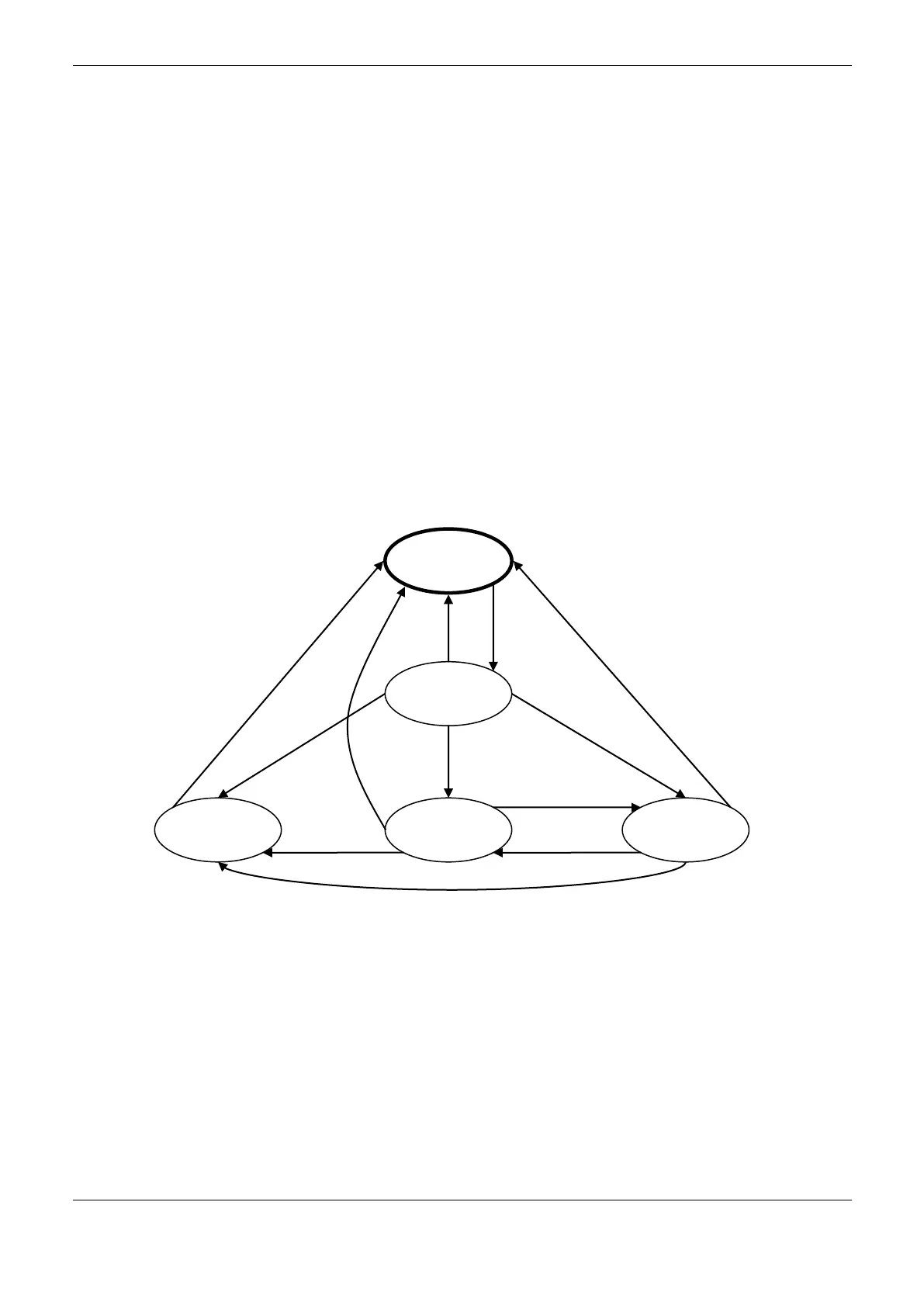6. Redundancy with NX3030 CPU
293
Each LED can be off, on or blinking. In case it’s blinking, it remains on for 0.5 seconds and off for
the same time.
Note that there are four different animations for the Active state, due to the following features:
At the first 2 seconds in Active state the LED ACTIVE led blinks and remains on afterwards.
This animation was created because in the first instants of the Active state, the CPU won’t accept
commands to get out from this state. For further details regarding this Active CPU behavior, see
Transition between Redundancy States and First Instants in Active State sections.
In case this CPU is switching off the other CPU through its PC2612 relay, the LED STAND-BY
blinks. It remains off otherwise.
PX2612 Relays
The PX2612 has two NO relays. The PLCA can control the RL B, to command the PLCB switching
off. The PLCB can control the RL A, to command the PLCA switching off.
Such switching off situations happen in exceptional situations, described in the Transition between
Redundancy States section.
Transition between Redundancy States
The following figure shows the redundancy state machine, illustrating all the possible transitions
between redundancy states.
Figure 6-14. Redundancy State Machine
The following sub-sections describe all these transitions, and the causes which can trigger them. In
order to interpret correctly this state machine functioning, some rules and sequences must be
established:
Transitions which originate from the same state must be analyzed in the sequence established by
their number. E.g. the transitions 2, 3, 4 and 5 are originated from the Starting state. In this
example, the transition 2 is first analyzed, then 3, 4 and, finally, 5. In case the transition 2 is
triggered, the transitions 3, 4 and 5 won’t be analyzed
Inside a specific sub-section describing a transition, several conditions can trigger it. These
conditions must be analyzed in the sequence they appear in the sub-section. Any condition that
goes true can cause a transition. If a condition causes a transition, the next conditions don’t need
to be analyzed

